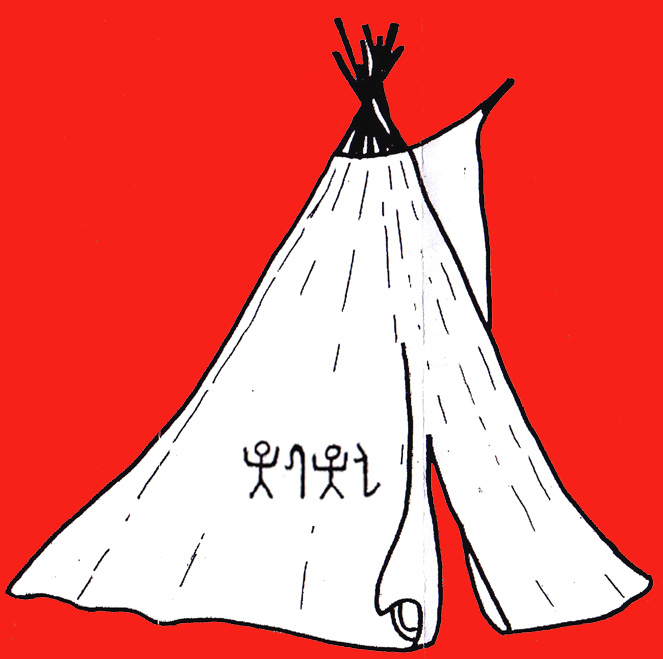
History of the American Indians
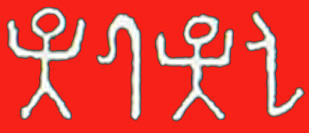
 |
History of the American Indians |
 |
| On our way back from passing out literature at the Ten Commandment rallies in Montgomery Alabama we decided to stop in at the Ron Wyatt Museum on I65 south of Nashville at Exit 27. Ron Wyatt discovered Noah's Ark in the mountains of Ararat, chariot wheels in the Red Sea, and the pillar Solomon had erected as a memorial of the event which has inscribed the sacred name of YAHUWAH in paleo-Hebrew. He also discovered the ashes in the shapes of buildings which were once Sodom and Gomorrah. While visiting, the brother working there noticed my T-shirt with the Ten Commandment stone from Los Lunas New Mexico, which led him to tell me about a stone wall about 12 miles east of Cleveland Tennessee that he had heard might have the Ten Commandments inscribed on it. He then gave me the name of a brother that might be able help me know more about it. Later, we made a trip to the area to see what we could learn concerning this matter. I was directed to the Bicentennial Library in Chattanooga to obtain more information, which was a great help. I was able to obtain several articles about it. The wall was discovered March 3, 1891 by J. H. Hooper owner of the land, the manner of the discovery was an accident as he was looking and digging for rocks to erect a chimney for his farm house. About a mile from their home they arrived at the top of a ridge where they began digging. Before many licks had been struck with the pick Mr. Hooper unearthed a sand stone rock which upon examining showed strange characters and unknown letters. This awakened his curiosity that perhaps there might be more. Hooper and his son continued to work with care. When down about two feet from the surface they struck rock again, but this time it was not a detached stone lying imbedded in the earth, but seemed to be a rock of considerable size. The two men decided to cease working over the top and began operations toward the side of what they believed to be a walled up slab buried in the earth. To their amazement they found a wall about 700 feet completely buried. Over the face of the wall was a coat of thick plaster hiding from view the inscriptions from beneath. This was removed and there, plainly to be seen the entire face of the wall covered with strange characters figures and pictures of animals. This wall is constructed in sections and put in place with a kind of cement. The mortar is of a reddish color, resembling to some extent, the red clay found plentifully throughout this section. The rocker slabs used in the construction of the wall are red sandstone, and edge to edge, with mortar between. They have a smooth surface made so the inscription will show plainly. There is a representation of a giraffe with a long neck. These came of Africa. Also a perfect impression of a human foot possibly "the foot of a giant", thirteen inches in length. "Dr. J. H. Poster, of the Smithsonian institute, Washington, D.C., was, soon after the discovery of the ancient wonder, sent to investigate it, and if possible read the inscriptions. After days of labour and research he gave up learning anything from this strange relic and returned home. He was, however, deeply impressed with what he saw, not withstanding his ineffectual efforts to make anything of it. It is told of him that one day while busily inspecting the wall he threw up his hands and exclaimed: 'My God, My God, this is too much for one man to study'." Chattanooga News October 17, 1902 Some believed this wall was patterned after the Israelites, as Moses admonished the children of Israel: "when ye shall pass over Jordan unto the land which YAHUWAH thy Elohim giveth thee, that thou shalt set thee up great stones, and plaister them with plaister: and thou shalt write upon them all the words of this law." Deuteronomy 27:2, 3 If this be the case, it would not only include the Ten Commandments, but all the statutes of the Torah. A wall with 700 feet, is surely enough writing space. At the time of this discovery, paleo-Hebrew was unknown to American scholars. Thus many thought it might be ancient Hebrew writing. From my own examining of the pictures available, I recognize a few Libyan letters, and some look Phoenician to me. I think it is possible that as much as three or four languages might be represented here. Just as the Davenport stele from the Iowa mounds had three languages on it, Libyan, Punic Iberian and Egyptian. This does not rule out the Lost Tribes of Israel, since they were scattered "among all people, from the one end of the earth even unto the other." Deut. 28:64 Scripture cannot lie! Most theologians interpret this to mean everywhere but America. Surely some of them had to learn different languages in order to function. If I were removed to Mexico, to communicate to anyone, I would have to learn Spanish. Case in point, the Calalus discoveries near Tucson Arizona where Jews used Latin. The Michigan Cuneiform discoveries also relate the Hebrew religion. Thus the point being made, that the possibility still exists that this wall was a type that was patterned after or influence of the Israelites. One thing for certain the approved academia cannot call this one a fake or a fraud since no one has had the time or ability to pull this thing off with out everyone knowing about it. Observing the rocks being piled up and then buried, and the time involved to inscribe an old world language that nobody knows about. Of course you and I know it's ridiculous to even imagine such a thing. This one is just too big! What ever became of the wall? It's still there! Because no one could understand what it said, I was told it was covered back up. From Chattanooga Times November 28, 1920
|
||||
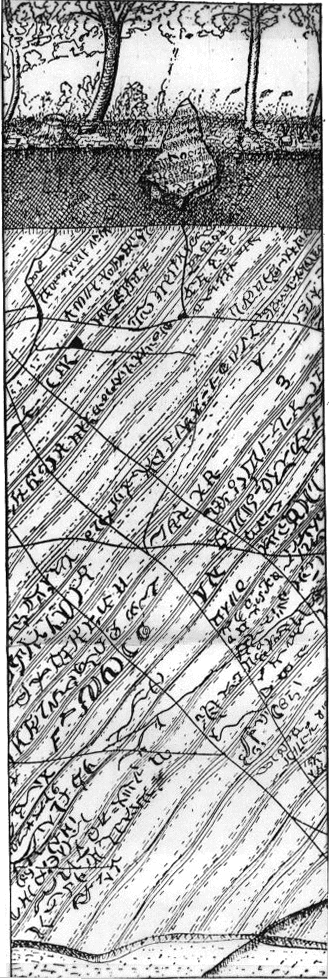 Section of Buried Wall Showing Marker and Excavation Section |
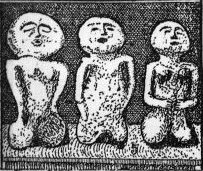 Image Found Near Wall
|
|||
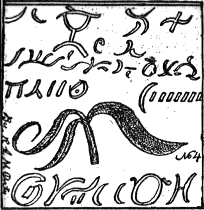 Picture Shows Characters 1/4 Their Real Size
|
||||
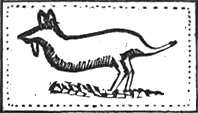 Crude Imprint of Animals on Stone
|
||||
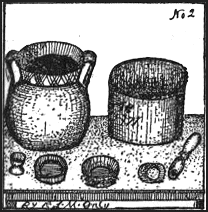 Types of Pottery Buried Near the Wall
|
||||
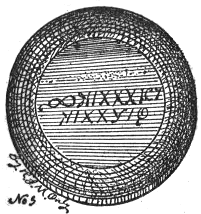 Plate found with Images |
||||
|
|
||||